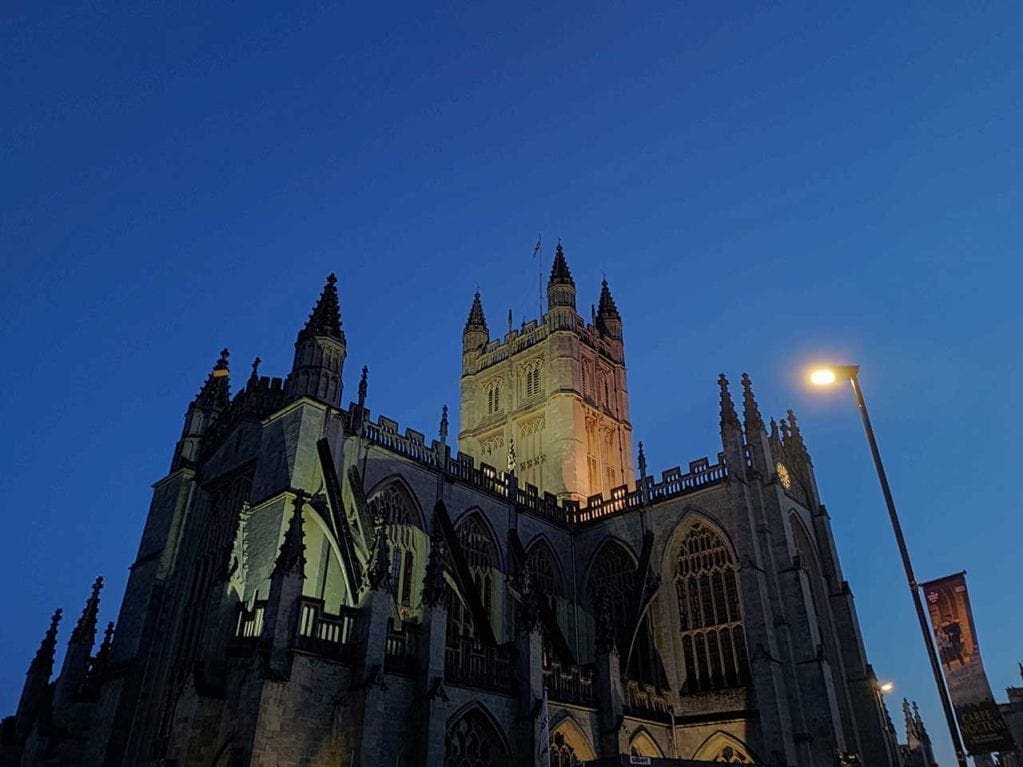What is the Asus Zenfone 6?
The ZenFone 6 is the latest flagship smartphone from Asus, a company better known for its laptops. With a price tag at $499, the Asus ZenFone 6 sits in the mid-range market but manages to offer some interesting features its rivals doesn’t: namely a dual 48-megapixel swivel camera that can rotate 180 degrees for extreme panoramas, and a 5000 mAh battery.
Photographers will also generous internal storage (up to 256GB) and a microSD card slot for extra space if you need it (up to 2TB).
Features
Asus appears to be going big with the ZenFone 6, rolling out an attention-grabbing design with its motorized rotating camera and solid camera specifications, such as 4K video at 60fps, all at a very reasonable $500/£500 price point.
Let’s dive first into that camera. Asus isn’t the first smartphone manufacturer to give its phone a pop-up camera. Both Oppo and OnePlus got there around the same time. But what’s novel about the ZenFone 6’s flip-out camera is that it can rotate up to 180 degrees to shoot extreme panoramas or images at odd angles.
With the OnePlus 7 Pro, for instance, the camera either flips up or it’s not. With the ZenFone 6 you can swivel the camera out slightly, for instance, to get a couple extra family members in the frame during a group portrait. Or you could flip it out all the way to capture the whole expanse of the beach you’re visiting.
From within the camera app you simply drag the selfie camera icon up to rotate it out, then down to move it back into the handset. Swivelling the camera out all the way eventually activates the selfie camera, and your screen flips. It’s very simple, and handy.
The camera unit is comprised of two lenses. The primary camera is backed by the same 48-megapixel Sony sensor found in the OnePlus 7 Pro and Honor 20 Pro. The second lens is ultra-wide-angle and offers 13-megapixel resolution.
So what else do you get for your $500/£500? Quite a bit! The ZenFone 6 has a massive 5000 mAh battery that promises many hours of use.
If you hate notches and bezels, you’ll appreciate its notchless 6.4-inch HD display and ultra-thin bezel. It’s display is also made of Gorilla Glass.
Inside, the ZenFone 6 is powered by the Snapdragon’s 855 chipset and it offers 128GB or 256GB of internal storage. If that’s not enough, a microSD card slot can accommodate cards up to 2TB in capacity.
If you’re a fan of headphone jacks, Asus keeps it real with a port on the bottom of the phone next to the USB-C charge port.
Asus ZenFone 6 Key Specs
- Main Camera: Sony IMX586 48MP image sensor – 1/2.0-inch sensor size, 0.8 µm pixel size
- Second Camera: 13MP, 125° ultrawide camera
- Motorized camera unit that swivels out of the handset
- Raw file support
- AI scene detection for 16 subjects
- 4K video at 60fps (for the main camera / 30fps for second)
- 6.4-inch Full HD+ (2340 by 1080) IPS display
- 92% screen-to-body ratio
- 600nits outdoor readable brightness
- 96% NTSC color gamut, supports DCI-P3 and HDR10
- Corning Gorilla Glass 6
- CPU: Qualcomm® Snapdragon™ 855 Mobile Platform with 7nm, 64-bit Octa-core Processor
- Weight: 190 grams (6.70 ounces)
Price & Availability
The Asus ZenFone 6 price tag is £400/$400 placing it in the mid-range of the market in terms of price. Natural competitors at this price point would be the Honor 20 Pro, OnePlus 7 Pro and Google Pixel 3a. You might also consider the Huawei P20 Pro, which has fallen roughly into this price bracket since the launch of the Huawei P30 Pro.
You can buy the Asus ZenFone 6 from retailers such as GearBest.

Build Quality
The ZenFone 6 is big, but not overly so. And that it houses that enormous battery but still remains about the same size as my Huawei P20 Pro is pretty impressive.
The Gorilla Glass 6 gives it a satisfying weight, and the aluminium body feels robust enough. It’s large 6.4-inch screen is an LCD display and isn’t as striking to look at as the OnePlus 7 Pro we recently tested, but it’s still very satisfying.
On the back is a fingerprint scanner, which sits just below the motorised camera. I never had any issues with the camera getting stuck or opening or closing properly. It moves swiftly and with purpose, and it doesn’t wobble. That said, I just couldn’t help worrying about it!
And that’s true of any pop-up camera. What if I drop it? Will it snap off?! I’ve dropped my P20 Pro plenty of times, and it’s been fine. Perhaps I’m a bit paranoid, but pop-up cameras give me an extra bit of low-grade stress that I just don’t need.
What if my kid manually pulls up the camera? What would that do? That seems something that could likely happen. And all motors will eventually fail, won’t they? What then?
My neuroses aside, the ZenFone 6 does offer a nice build quality overall. The ZenFone 6 doesn’t feel luxurious, but nor does it feel cheap by any means.
Performance
The ZenFone 6’s 1080 x 2340 LCD may not be the punchiest on the market, but it’s still vibrant and images look fantastic. It may not be an OLED screen, but it almost feels like one, if that makes sense.
Its brightness and colour saturation made scenes very easy to compose in bright light.
Likewise, image quality is superb. The ZenFone 6 produces natural colours and renders some very nice detail. Photographing an old church in the Somerset countryside, I was surprised upon zooming in to actual pixels how much detail was in not just the pointing of the stones in the wall but in the stones’ textures as well.
It was a bright, sunny day, and nor did I find any purple fringing along the edges of high contrast with the church and the sky.
And it makes sense that the ZenFone 6 produces such great image quality given that it shares the same sensor as the Honor 20 Pro and OnePlus 7 Pro, which we recently tested. Its 48-megapixel sensor has a Bayer filter array that uses the photoreceptors in blocks of four to create the colour, and the image is interpolated back to 48Mp.
Dynamic range is also superb in images from the ZenFone 6, thanks to its HDR+ that grabs more detail in the highlight and shadow areas. And it does this while managing to keep images looking natural and realistic.
The ZenFone 6’s AI Scene Detection technology covers 16 different scene types, and I found it reliably picked these up. The 16 scenes include food, sky, green field, plant, ocean, sunset, snow, flower, stage, dog, cat, people, text, tripod, QR code and night view.
Pro Mode
In the ZenFone 6’s Pro mode you get all the usual controls over exposure. I found the design of these controls a bit easier to use than my P20 Pro, if I’m honest. Rather than a traditional slider that can sometimes be hard to move with accuracy, the ZenFone 6 uses a wheel that extends into your scene and allows for a bit more precision when you’re adjusting exposure compensation by a stop at a time.
In Pro mode you can also shoot raw files or take long exposures at up to 32 seconds long.
Portrait Mode
As you’d expect, the ZenFone 6 offers the ever-popular Portrait mode. It seems to find and lock on to faces well enough, but I didn’t feel like its bokeh effects are some of the best I’ve seen. Not as natural. Overall, though, they look fine.

Super Night Mode
Huawei broke the mould with its Night Mode, but Asus puts in a good challenge. It’s not as good as Huawei, but I’d say its Super Night Mode is every bit as good as the OnePlus 7 Pro.
While Huawei’s flagship phones can shoot in near pitch darkness, the ZenFone 6 can’t quite match that capability. But shooting late at night in a city centre with ambient lighting, it will produce some really striking images that are remarkably sharp and noise-free.
AF and Motion Tracking
The ZenFone 6 autofocus system does a nice job of finding subjects and rendering them in focus. Its Motion Tracking mode is also quite adept. In Motion Tracking mode I locked focus on my son’s face and then moved behind trees and shrubs.
The AF system reliably stayed locked onto his face as I did this. It would drop, as expected, when I moved behind a tree but picked his face back up again as it came back into view.
You seem to get a couple seconds leeway with Motion Tracking. If it loses your desired focal point in the frame for too long, it will drop focus. But as long as your view is clear or the obstacles aren’t too big, Motion Tracking does a fine job of keeping your subject in focus.
Video
- 4K UHD (3840 by 2160) video at 30 / 60 fps for main camera, at 30 fps for second camera
- 1080p FHD video recording at 30 / 60 fps
- 3-axis electronic image stabilization
- Motion Tracking video (1080p FHD video at 60 fps)
- Time Lapse (4K UHD video)
- Slow Motion video (1080p at 240 fps / 720p at 480 fps)
- Take still photo while recording video
The Asus ZenFone 6 is no slouch in the video department despite its mid-range price tag. From the main camera you can shoot 4K video at 60fps, which is a rarity at this price point. My Huawei P20 Pro, which is now priced about the same as the ZenFone 6, tops out at 30fps.
The 4K videos I shot are crisp and full of detail with the same natural colours. Another nice feature is Motion Tracking video (available only in Full HD at 60fps), which I used to track my kids climbing a hill in our local woods.
You can also shoot slow motion videos in Full HD at 240fps, or create ultra-slow-motion effects in 720p at 480fps.
ZenFone 6 sample photos
The following sample images were shot with the Asus ZenFone 6 during the course of our test.








Verdict
I was genuinely surprised by how good the ZenFone 6 is. I expected a smartphone camera that was just good enough at most things, and instead I found myself shooting highly detailed images and beautiful 4K video at 60fps.
Some might think the swivel camera a bit gimmicky – or it might make you nervous it will break, like me – but it really does add another dimension to your photography.
For one, you can shoot panoramas without needing to swivel your body around. But you can also shoot slightly wider images for groups, fit an entire statue into your frame and just generally have a lot more flexibility with composing.
The battery life will also be really useful for smartphone photographers and videographers, particularly on holidays and days out where you the flexibility of heavy use without getting caught short on battery life.
At this price, with its advanced features and offering solid image quality, the Asus ZenFone 6 should surely be a consideration for any photography or videography enthusiast.



